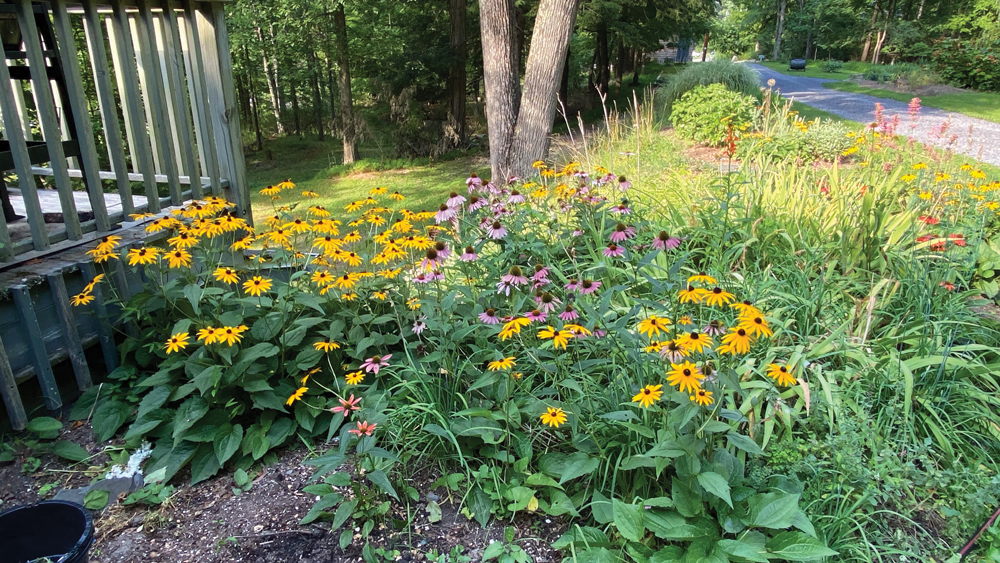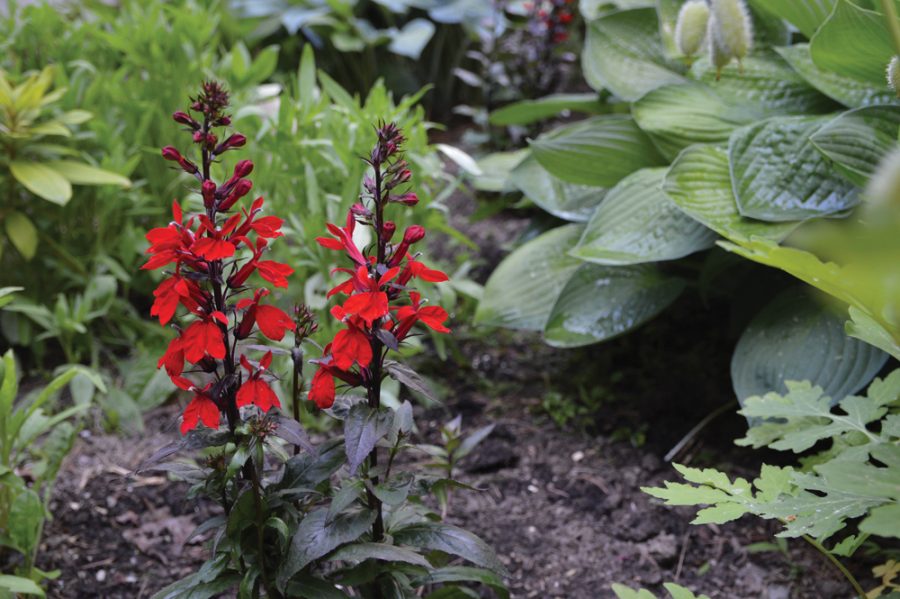Enhancing Your Home Ecosystem
The Benefits of Landscaping with Native Plants
Presented by Hudson Valley Native Landscaping | Spring 2021 | High-Performance House
If you’re committed to making your home healthier and more energy-efficient, you might think that it’s only the decisions you make about what goes into your house that matters. But if you want to bring your well-being at home full-circle, you should take another look at the landscape that surrounds your house.
“One of the benefits of living upstate is being surrounded by nature, but that doesn’t come naturally anymore,” says John Messerschmidt, owner of Hudson Valley Native Landscaping, based in High Falls. “Many trees are diseased, fallen, or unhealthy, and invasive plants have taken over. We have a responsibility to create the conditions for healthy forests and to maintain diversity.” Homeowners who design their landscapes with the region’s ecology in mind not only create beautiful gardens, but they can help repair and balance the local ecosystem, reduce resource consumption, and promote a sense of oneness with their surroundings.
Messerschmidt often works with new homeowners who have acquired unmaintained, overgrown gardens and woodlands to foster the natural ecology of their land using forestry restoration and permaculture techniques. As part of this rejuvenating journey, his team starts by clearing out non-native plants like bittersweet, multiflora rose, and Asian honeysuckle, which allows native plants that have a history of beneficial relationships with other local plants, animals, and insects to soon thrive.
“That’s when we can get creative and start planting for diversity and positive impact on wildlife,” he says. “Birds don’t like the invasives anymore than we do, so what’s beautiful for them will be beautiful for us.” Planting native species like brightly colored monarda (commonly known as bee balm), candle-like black cohosh, and creeping dogwood will delight local pollinators (and as a bonus, are deer-resistant).

The cardinal flower (lobelia x speciosa), which blooms in July and lasts through September, is great for attracting hummingbirds and thrives in rain gardens.
Native plants are also a win-win when it comes to energy conservation since they’re often grown at local nurseries, not shipped in from warmer climates. “The energy to get those plants grown and to your door is less than if it were a cultivated species that isn’t native to our region,” he says. Plants that are native to the Northeast also require less water because they have evolved to tolerate the natural cycles of our climate. Other landscaping tactics, like planting native trees on the west side of the house to help buffer cold winter winds, can be a boon to your heating bill.
No matter what native plants you end up choosing, their beauty will enhance the landscape around your home and contribute to your pleasure of living there. Curating gardens near your windows, patio, or deck with plants that spark visual interest year-round ensures that you will be immersed in nature each season—whether barbecuing among the flowers in the summer months or cozied up near a window during the winter to watch the birds search for seeds in your garden. “Choosing native plants gives you the opportunity to have beautiful gardens and contribute to nature in a fundamental way,” Messerschmidt says. “We design gardens that will have something blooming in every season, so you can feel connected to the nature that we’re a part of.”
